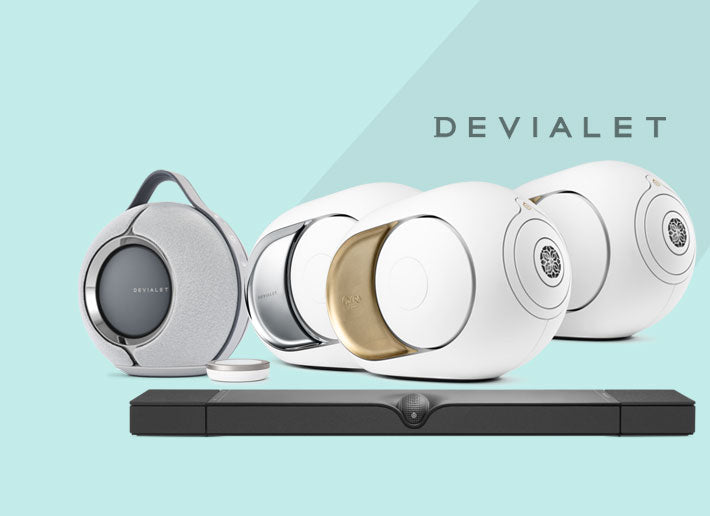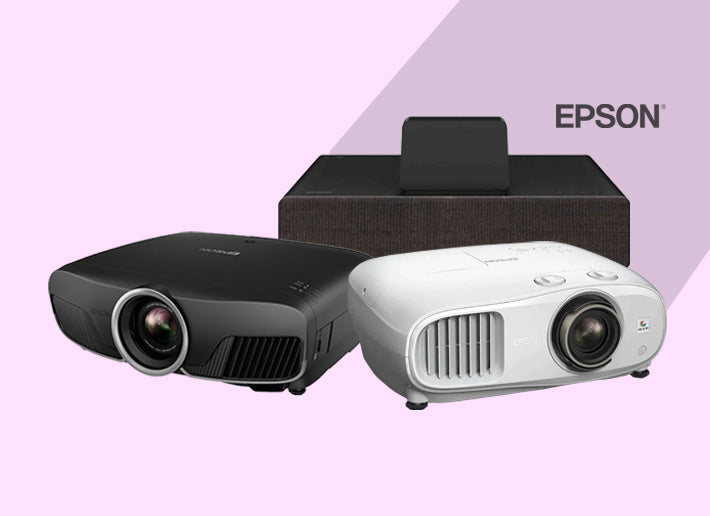We take you through the usual suspects of a home studio setup and explain why and how to choose the right equipment for your foray into home recording
Building a home studio is a dream for many aspiring musicians, podcasters and content creators. The allure of having a personalised space to craft music or create audio content is tempting, but it can be overwhelming to navigate the myriad of equipment choices available today.
Whether you're a beginner looking to produce your first track or a seasoned professional scaling down for a home setup, understanding the core components is essential. While creativity drives your output, the right gear ensures your vision comes to life with clarity and precision.
Before we get into the different components of a home recording studio, let’s look at what kinds of studios people generally build.
From Beats to Broadcasts: The Many Flavours of Home Studios
Home studios vary based on their purpose. Music production studios are designed for recording, mixing and producing music with essential equipment like instruments, microphones and DAW software. Voiceover and dubbing studios focus on capturing clean vocals, requiring soundproofing and high-quality microphones.
Whereas podcast rooms are built for recording spoken content and often include multiple microphones and soundproofing, streamers and content creators set up voice recording studios for real-time audio and video capture, using USB mics and streaming software. Then there are hybrid studios that combine podcasting and music setups, offering versatility. Post-production setups typically specialise in mixing and mastering audio, while project studios are general-purpose spaces for music, video and sound design tasks.
While equipment choices don’t differ drastically, their combination does change with the application. Before we get into the hardware that’s used in these studios, let’s briefly explore the role of Digital Audio Workstations (DAWs) and their importance in home studios.
DAWs: The Wizard Behind Your Home Studio
Digital Audio Workstations (DAWs) are essential software tools in home studios, allowing users to record, edit, mix and produce audio. Whether you're creating music, recording a podcast, or working on dubbing or voiceovers, a DAW acts as the central hub for all audio-related tasks. It provides features like multitrack recording, audio effects, virtual instruments and automation, making it easier to enhance and manipulate sound.
For musicians, DAWs enable everything from composing tracks using MIDI to refining audio with EQ, compression and reverb. Podcasters use them to edit episodes, remove background noise and add music or effects. For dubbing or voice work, DAWs help sync audio to video while maintaining high-quality sound. Popular options like Logic Pro, Ableton Live and Pro Tools are widely used in both amateur and professional setups due to their versatile capabilities.
Now that we have a preliminary understanding of the software driving a home studio, let’s explore essential hardware that works in concert with it. There’s no better place to begin than the hub of your setup, the humble audio interface.
Audio Interface: The Heart of Your Studio
The audio interface is where the magic of sound conversion happens. Acting as a bridge between your instruments, microphones and computer, it captures audio signals and converts them into digital form. Without it, your high-end mic or MIDI keyboard is just a fancy piece of equipment. Choosing the right interface, however, depends entirely on your needs and wants.
A good place to start is by thinking about how many instruments or microphones you plan to use simultaneously. If you're a solo creator or podcaster, a 2-input interface may suffice, but if you're recording a band or multiple sources, you’ll want more inputs. You also want to consider the quality of the preamps as it directly impacts how clean and accurate your recordings will sound. Investing in better preamps can make a noticeable difference if you're primarily recording vocals or acoustic instruments.
One question that you want to ask yourself very early is if you’re setting up a permanent studio or need something portable for on-the-go recording. Portable interfaces may have fewer features but offer convenience. Think about where you are now and where you might be in the future. If you’re just starting, a basic interface might be ideal, but if you foresee expanding your setup, investing in a higher-end model with more flexibility may save you money down the line.
Once you've chosen the right interface, you'll need the right microphones to pair with it to capture sound at its finest.

Also Read: How to Choose an Audio Interface for Your Home Studio
Microphones: Capturing Quality Sound
Microphones are the voice of your studio setup—whether you’re recording vocals, instruments, or podcasts, choosing the right mic can make or break your audio. A condenser microphone is likely the best option if you work in a quiet, controlled space like a studio. Condensers are sensitive and capture detailed, nuanced sound, making them ideal for vocals, acoustic instruments, or voice-over work. A dynamic microphone is a better fit if you're recording in a noisier space or need a mic that can handle higher volumes without distortion. They are more robust and less sensitive to background noise, making them ideal for loud sound sources like drums or live performances.
Think about what you’re recording most often. For voice or podcasting, clarity is key, so a condenser mic might be the way to go. For electric guitars or loud amps, a dynamic mic can better capture the energy of the sound without distortion. Condenser microphones tend to be more expensive and delicate, so if you’re on a tight budget or need something durable for travel or live performances, dynamic mics are generally more affordable and rugged.
Keep in mind that microphones often need the right accessories for optimal performance. A pop filter helps reduce harsh plosives, while a shock mount minimises vibrations. Don’t overlook these tools—they’re key to getting clean, professional audio.
To accurately assess what you’re recording, you'll also need high-quality monitoring equipment.

Image credit - Headliner Magazine
Headphones & Studio Monitors: Getting the Right Kind of Feedback
When recording or mixing audio, regular speakers or headphones won’t give you the accurate sound representation you need. Studio monitors and professional-grade headphones are designed for flat, neutral sound, enabling you to hear every detail, both good and bad.
Studio monitors are ideal for mixing if you have the luxury of working in a properly treated space. They offer a more accurate, uncoloured sound that gives you a clear picture of how your audio will translate across different playback systems. However, if you're working late at night or in a shared space, professional headphones are a practical alternative for detailed listening.
If your space isn’t acoustically treated (more on this in the next section), studio monitors might not give you accurate results due to room reflections and poor acoustics. In such cases, relying on premium headphones can provide a more controlled listening environment. For tracking and recording, closed-back headphones are preferred since they prevent sound leakage and keep external noise out, making them ideal for isolating individual sound sources. For mixing, open-back headphones provide a more natural, airy soundstage, which can help you better assess the stereo image and depth of your mix.
Consider how your workflow will evolve. If you're frequently moving between different environments or can’t invest in proper room treatment right away, a solid pair of headphones may be a smarter investment. On the other hand, if you're building a dedicated mixing space, investing in studio monitors may give you more accurate mixes in the long run.
Once you’ve got all your equipment in place, you can begin to fine-tune your setup and pay closer attention to acoustics and comfort. Let’s briefly look at some finer adjustments you can make to improve your experience further.
Also Read: Get Started with Building a Home Studio with These Pro Tips
The Final Flourish: Ergonomics and General Housekeeping
A well-thought-out studio isn't just about gear—connections, ergonomics, acoustics and layout can significantly affect your productivity. XLR and TRS cables are standard for microphones and instruments.
Always opt for balanced cables to minimise noise and signal interference if you are connecting balanced audio gear. Cheap cables may save money upfront but can introduce noise and degrade over time. Investing in high-quality, durable cables ensures longevity and reliability. However, you don’t need the most expensive option—choose cables based on your equipment’s quality and signal chain length.
Investing in an adjustable chair with good lumbar support can prevent fatigue during long sessions. A sturdy, well-organised desk with adjustable monitor stands helps keep your workspace efficient and ergonomic.

Image credit - SkyTracks
Finally, your studio space can dramatically affect the sound of your recordings and mixes. Even the best gear can yield subpar results due to reflections, echoes and unwanted reverberation without proper treatment. If you're primarily mixing, a more extensive treatment setup is beneficial, with panels strategically placed to target first reflection points. For recording vocals or instruments, isolating areas with foam panels or using a vocal booth may be more appropriate. For beginners, budget-friendly options like foam panels and diffusers can significantly improve sound without breaking the bank.
You can make informed decisions about everything by considering your unique space, equipment needs and workflow preferences. Each element of your home studio plays a critical role in the quality of your recordings and the ease of your creative process. Whether you’re just starting or refining your setup, optimising these foundational components will help you produce professional results and enjoy the studio experience.
Explore our premium range of Pro Audio Gear or get in touch for a bespoke solution. Our team of experts can help you get up and running in no time.









